
You may recall how Google Maps recently changed the polygonal camouflage on one of the Dutch landscapes I was using for my painting project.
I was back there, getting a clean shot of the nicely distorted grid plaza–the site belongs to the Koniklijke Marine, the Royal Navy, and is apparently the home address for the Royal Marine Band–when I saw that the Streetview icon was activated. Looks like Google’s camera cars reached the football field-filled outskirts of Rotterdam.
But not all of them. The available imagery shows that Google is excluding all street-level imagery from around the camo’d compound. The previous official explanation for camo-obscuring intelligence-sensitive sites was that the Dutch government claimed jurisdiction to censor aerial photography, but not satellite imagery. I guess there’s another law that forbids street-level photography from public roads, too? Yes and no.
A quick stop at the ur-Dutch Camo Landscape, the Noordeinde Paleis in The Hague, shows that Streetview is unavailable for its entire perimeter. But the other camo’d complex, a Royal Garage or something, to the northwest through the park, shows up just fine. The south perimeter of that giant, cut-n-past camo blob is just fine, which makes me think that the building being camo’d–I think it’s the HQ of the Defense Ministry itself–is on the next street up, which is, indeed, blocked. Unfortunately, Noordwijk ann Zee, the beachfront town that is the site of my favorite inexplicable, airdropped camo blob, has not yet been added to Streetview.
Update: In actual governmental/military news, the Dutch coalition government just collapsed in the face of growing opposition to extending the deployment of 2,000 Dutch troops in NATO’s operations in southern Afghanistan.
Category: etc.
Dutch Camo Mashup Goodness

I guess that’s the whole point of camo, you just never really know what you’re gonna see.
In February 1942, the Dutch minesweeper the HNLMS Abraham Crijnssen survived the Battle of the Java Sea, in which the Japanese Navy crushed Allied forces [AU, UK, NL, US] and invaded the Dutch East Indies [aka Indonesia].
To evade detection from the air and retreat to Australia, the Crijnssen‘s captain ordered the 186’ ship disguised as an island by covering it with branches.
Unlike the official, formal Razzle Dazzle camouflage technique used in WWI to confuse submarines, the Crijnssen‘s improvised approach worked. The ship survived and eventually ended up in the Dutch Navy Museum at Den Helder, the city at the tip of the North Holland peninsula which has long been a strategic nexus of Dutch naval and shipping operations.

In fact, when you look up the Crijnssen on Google Maps, there turns out to be a huge complex of Dutch Polygonal Camo just to the east, the main base for the Royal Dutch Navy.
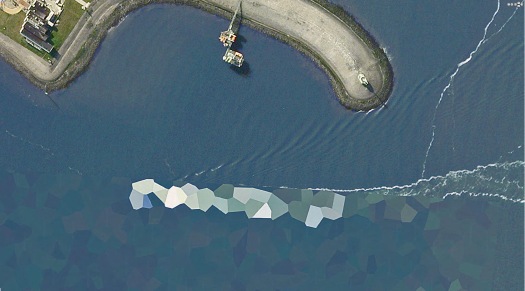
And the camo extends out into the water in order to cover a ship caught by Google’s Aerodata photographers just as it passed by the world’s most undeniably phallic breakwater. Wonder what the sailors’ nickname for that is.
Here a Google Map with both generations of Dutch naval camo, side by side:
View Larger Map
HNLMS Abraham Crijnssen at the Historical Naval Ships Assn [hnsa.org via boingboing]
At Play In The Closets Of The Lord
Another in an unanticipated series of instances of projection of emotion upon inanimate objects:
To the cashmere sweater who falls from the closet shelf onto the back of your clothes, the tips of all those dry cleaner hangers you haven’t thrown away are concertina wire, and when you take it out, you are not, as you may think, its savior, but its crucifier.
Primary Atmospheres at David Zwirner
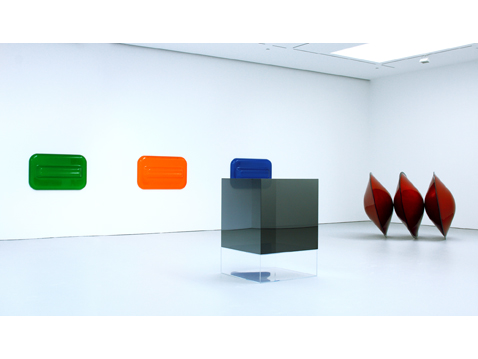
Last month I watched the essentially sculptural process of designing and making fiberglass Eames chairs, and I wondered “how design and art ever stayed separate in those days.”
The answer, of course, was that it didn’t. David Zwirner just opened “Primary Atmospheres: Works from California 1960-1970,” the kind of show I’d totally expect to see in a museum [1] [2]. From the press release:
While most of the artworks included in the exhibition can be referred to as minimal in form, their seductive surfaces, often madeout of nontraditional materials, and their luminescent use of color and light characterize them as uniquely Southern Californian.
…
The works on view capture some of the more specific aesthetic qualities of the Los Angeles area during the1960s, where certain cutting-edge industrial materials and technologies were being developed at that time. Many of the artists employed unconventional materials to create complex, highly-finished and meticulous objects that have become associated with the so-called “Finish Fetish” aesthetic.
These artists were also influenced by the industrial paints applied to the surfaces of surfboards and cars, as well as the plastics of the aerospace industry.
Industrial and commercial materials and processes, surfboards, cars, signs, aerospace. As awesome and long-overdue as Zwirner’s show is, it sounds like there’s a lot more about the relationship of postwar art and design to be discovered, written about, and shown. So hop to.
Primary Atmospheres: Works from California 1960-1970, through Feb. 6, 2010 [davidzwirner.com]
16miles reports beautifully from the scene of the opening [16miles.com]
image above: works by Craig Kaufmann in vacuum-formed plexi; Larry Bell in mineral coated glass; and De Wain Valentine in fiberglass-reinforced polyester, via zwirner.
[1] In fact, it feels like a slice of the Pompidou’s much larger 2006 survey of Los Angeles, hopefully without the negligent destruction of the non-traditionally constructed art. Several of these artists were also in PS1’s odd “1969” show last year, so not quite as unexposed as the press release implies.
[2] Zwirner’s last Flavin show was the same museum-quality, but not to be found in a museum. And then there was the Flavin Green Gallery and Kaprow shows at Hauser & Wirth. How are there not more museums in town doing small-to-medium-sized, historical contemporary shows like this? The exhibition equivalent of an essay instead of a book? It seems like such a free way to work and think. PS1 is the closest I can think of, though I’m always ready to believe I just don’t get out enough.
Carry On With The Despair
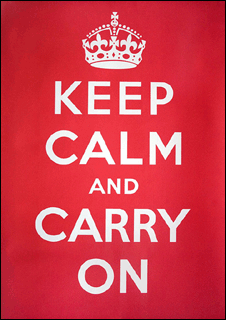
My first reaction on reading the BBC’s 2009 list 100 things we didn’t know last year for 2009 was, “What you mean ‘we,’ Kemosabe?”
But seriously, the “Keep Calm and Carry On” poster was never actually used in WWII, it was only printed in two-and-a-half million times and stockpiled “in the event of a national catastrophe, but remained in storage throughout the war,” and then pulped, except for one which some guy found in a box in 2000 and hung in his bookshop, which he eventually decided to reproduce, because everyone wanted to buy it, and thus started a nostalgic design craze?
I feel like ‘we’ should have known that sooner, if only so we’d be prepared for the BBC’s tips for coping with the nationally catastrophic cold snap:
2. NEVER LET YOUR GUARD DOWN
3. GET USED TO SNOW
4. LEARN TO ACCEPT DEFEAT
5. HAVE LOWER EXPECTATIONS
Also, “46. Franco had one testicle.” puts the whole General Hospital/performance art/Deitch thing into perspective. [via kottke]
On Rotating The Dishes
Sometimes I worry about the dishes.
I think we have half our dishes out, and half in storage. Not fancy china, which we felt right off was a pointless wedding scam, but the everyday stuff, which we still have a dozen place settings of, but no kitchen or dining room big enough to realistically deploy them all.
So we have dinner, take down a couple of plates, wash them, dry them, put them back. Have soup more rarely, take down a couple of bowls–big? small?–put them back.
And this is what I sometimes worry about: do I put them back on top of the stack? Do I put the bowls back in the empty front spot on the shelf? Because if I do that, then guess which dishes are going to get reached for the next time? That’s right, the same ones.
So do I rotate them, put the dishes away at the bottom of the stack? Because the glass dessert plates are underneath the glass dessert bowls, and that means lifting the entire thing up and/or out to put the plates underneath. And the dinner plates are kind of snug under a rack that holds the salad plates, not so easy to get–anyway, I’m rationalzing now; the reality is, I don’t really rotate the dishes that much. Not as much as I feel I should.
As I was explaining this to Jean last night, after a dinner of Indian food which required the use of an extraordinary number of our big rice bowls–four–plus the kid-sized cereal bowls, I actually joked about rotating the dishes because I didn’t want the dishes underneath, or in the back, to be lonely.
But what I really think about isn’t the dishes, or even us or me, necessarily, except that it is. When I pull down and put away the same plate a couple of times a day, always from the top, I imagine what the cumulative effect of repeated use will be over the years.
Then I imagine a guy living alone, eating alone, washing and putting away his dish alone, for years. One dish accumulating the scars and scratches and chips of use, while the three, or five, or seven, or even eleven dishes below it sit untouched.
I see old china at the flea market or in a vintage store, and I imagine finding such a set, and it makes me kind of sad.
But not as sad as imagining the same guy eating and washing and drying his dishes alone, and then carefully rotating them so that they wear uniformly.
Related, and the inspiration for posting this now: Roger Ebert’s reflections on what it’s like not to eat or drink or talk anymore. [suntimes.com]
Lazy Web Request: The Saturn Rings Photo App
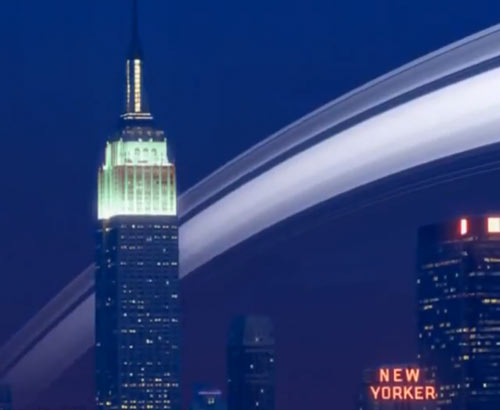
I’d ignored the whole “this is what Earth would look like with Saturn’s rings” thing until Jason grabbed this screen of New York from the video.
Roy Prol made the various photos using the lat/long of various cities. With the combination of GPS and orientation data that’s baked in to so many digital photographs, it should be possible to create a filter–I hear the kids call them apps now–that automatically inserts properly positioned Saturn rings into any sky you want. So if somebody would just hop on that, thanks.
And All Is Right With The World
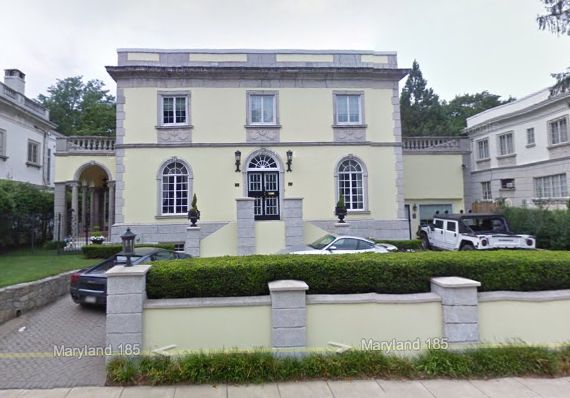
For years, I’ve driven past the revival palazzo–the one with the Hummer and the Ferraris and the Porsche, the one that’s just the exactly wrong color of chiffon yellow–on my way in or out of town, and I’ve wondered who? And then I saw him walking the little dog, the portly man with the toupee the colors of a red ruffed lemur. I am now at peace.
Gene Smith And The Jazz Loft Project
I’m diggin’ the crazy cats at WNYC and The Jazz Loft Project. After abandoning his family in Westchester, longtime LIFE photographer W. Eugene Smith wired his 6th Ave loft for sound and recorded the hell out it for several years in the 1950s. Until 1998, no one had ever listened to the 4,000+ hours of tapes in Smith’s archive. Turns out they held the conversations, practice sessions, and jam sessions, and hundreds of jazz musicians, and they captured a remarkable slice of mid-century downtown/underground New York City.
They’re up to Episode 6 right now. Ep. 7 will be about how “urban pioneers in New York’s Flower District find ways to make lofts more livable.”
Catch up with the series and check out the enticing web extras at WNYC’s Jazz Loft Project page [wnyc.org]
The Mystery Of What To Eat At The Sphinx
This has to be one of the funniest pullbacks ever.
What Do People Do With Their Google Voice Numbers?
I took two main factors into account when I signed up for Google Voice:
I know it’s old-fashioned, but I wanted the area code’s geography to have some significance.
I wanted something catchy, brand-y, not just easy to remember, but worth remembering. My name, URL, etc. would have been ideal, but if not, then some usefully meaningful word or phrase would do.
Which is how I ended up with 34-SOUVENIR. 347 is a New York City area code, of course, but SOUVENIR was just about the longest word I could generate with the 10-digit numbers in Google’s pot. And it happens to have a nice resonance with my first short film series. And it happens to mean “remember” in French, so it’s built right in!
Now I just need to figure out what to do with it. Any thoughts or suggestions? Give me a call.
Lose 10 Lbs With My Exclusive Red Vines Diet!
1. Pop open a Diet Coke.
2. Eat all the Red Vines you want.
3. uh, actually that’s as far as I’ve gotten.
And That’s Why They Call It Total
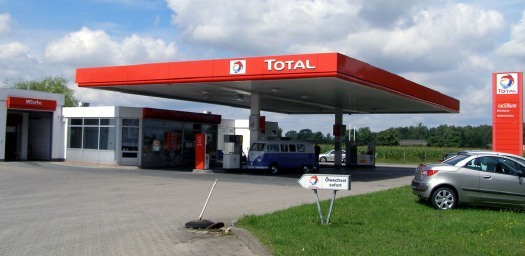
So I’m just walking back in from the hardware store, when I realize I missed a call from a Utah number. I call it back, the ringer goes all funny, and it turns out to be the cell phone of my mom’s new husband Spence [congratulations, you guys!], and they’re on the side of the road in Giverny, on their way to dinner when the bad tank of gas they bought finally does their Hertz car in, and it won’t start.
Hertz France doesn’t do jack, and the Hertz Paris office closed early, apparently, and while the Hertz US folks are helpful and promise to file a poor service report on their French counterparts, that still doesn’t help them get back to their inn. American Express and their concierge service, for which they pay an inordinate annual fee, primarily on the off chance that, if they get stuck on the road somewhere, AmEx has their back, got disconnected just as they got all their info into the system, and that’s right when I called back.
So I call Hertz Paris, and it’s supposed to be open for another 45 minutes, but there’s no answer. Then I go to Mappy.fr, because really, their maps kill for Europe, and sure enough, there’s their hotel, and I can map all the service stations nearby and even see how much gas is. But there are no phone numbers, so I Google up the closest one with a service bay–because in the country, they sometimes just have tiny little gas-only stations–and call.
And some guy answers, and I explain I’m calling from the US, and my mother’s on the side of the road, trying to get back to the inn in whatever village, and he’s all, “Is that the one run by Nicole?” And I’m like, “Je ne sais pas,” but it’s the one just off Rue du Port, and he’s all, “Yeah, Nicole.”
And I tell him what they’re driving [grey Opel], and about where they are, and he says he’ll call Nicole and let her know, then head out to pick them up. And so I call them back, and I’m like, “Do you know someone named Nicole?” And they’re all, “Oh, she’s the woman who runs our inn.” And I’m all, “A guy from the Total station will be there in a few minutes.”
And then I primed the inside of the closet and called them back, and they were at the inn, eating dinner, and the guy had told them, sure enough, “mauvais essence,” and he’s bringing their car back in the morning, pas de probleme.
And now I’m thinking it was only 1992 when we were freaking out over them monitoring the terrorist kill from Langley in real time in Patriot Games, and now here I am, literally watching paint dry while I give directions to the tow truck driver half way around the world. What a crazy world.
The Thom Assclown Affair

In the past, people criticized fashion shows because the looks from the runway never made it to the street. Well, Thom Browne sure showed them.
Tommy Ton’s photoset of Browne models waiting to enter his show is an instant classic.
Backstage: Thom Browne Lineup [jakandjil.com via kottke, the awl]
Ai Weiwei Undergoes Emergency Surgery In Munich
For a month after being beaten and detained by Chinese police, artist Ai Weiwei had complained of constant headaches. While in Munich to install a show, he went to a doctor, who sent him into emergency surgery to alleviate a cerebral hemorrhage. The news was reported, of all places, by the editor’s blog at Frieze magazine, which published accounts from his assistant and one of the artist’s fellow activists involved in publicizing the names of 5,000 children killed in school collapses in the Sichuan earthquake.
Ai has been publishing photos and updates [in Chinese] on Twitter.
Ai Weiwei in hospital after police brutality [frieze.com]
Ai Weiwei erhebt schwere Vorwürfe gegen Peking [sueddeutsche zeitung]
